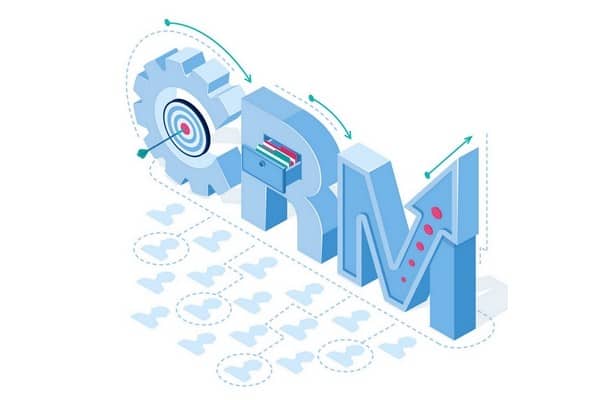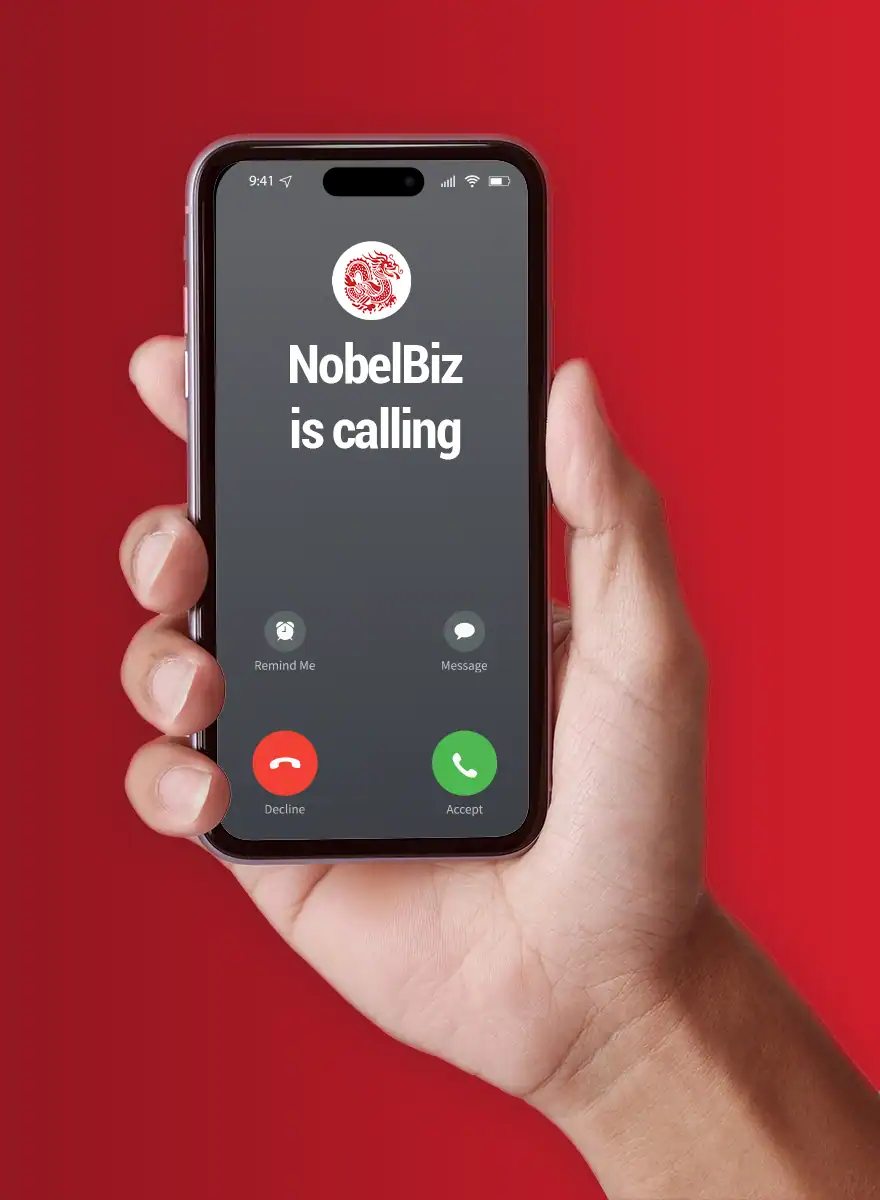More than just a system for controlling inbound and outbound calls, telephony software has evolved into a powerful tool for increasing productivity and enhancing customer satisfaction within contact centers. While business owners must consider their own goals when selecting the best technologies, having a CRM is one of the cornerstones of high performance in contact centers. But what are the most important functions to look for in a CRM for Customer Service?
Why is CRM a Must-Have in Customer Service?
One of the primary advantages of CRM integration with contact center technology is call flow management. Fortunately, the unmistakable rise of digital technology has enabled the use of revolutionary cloud-based solutions. These solutions provide the ability to handle inbound and outbound calls through Internet-based telecommunication systems.
1. IVR
 Customers in an IVR system can choose options by pressing numbers. When a digit is pressed on the telephone keypad, a tone is transmitted to a contact center host system, which then chooses appropriate actions based on the digit pressed.
Customers in an IVR system can choose options by pressing numbers. When a digit is pressed on the telephone keypad, a tone is transmitted to a contact center host system, which then chooses appropriate actions based on the digit pressed.
When connected to the interactive voice server, the customer is then directed to a series of increasingly accurate and comprehensive services or information based on the responses and choices provided through the chosen keys. Even more, when programming a voice server, sub-menus can be created.
IVRs Can:
- Solve problems faster which also reduces waiting times
- Improve the customer experience by providing callers with the special information they need 24 hours a day, seven days a week.
- Improve the customer service image as well as key performance indicators
2. Automatic Call Distribution ( ACD )
Automatic Call Distribution or ACD is a tool that allows for handling a large volume of incoming calls. These calls will be distributed to agents with specific skills.
Let’s say, you got calls in two languages, English and Spanish, and that you have three agents available. Marcus is fluent in English but not Spanish, Jack is good in Spanish but not English, and Emily is fluent in both but not as well as her friends.
In this instance, the Automatic Call Distributor will transfer the English call to Marcus first, since he has the highest English language proficiency score. Only if Marcus is unavailable will the English call be routed to Emily; if both are unavailable, the system will provide an alternate response. The Spanish call will, of course, be directed to Jack.
In other words, the ACD’s role is to:
- Distribute intelligently and selectively separate calls among agents based on skill levels.
- Give your agents and supervisors access to a wide range of information based on previous interactions.
3. Statistics and Metrics

The days of call centers having just a hazy understanding of call volumes, missed call rates, and key figures are over! Today, effective customer service management necessitates a thorough examination of call statistics and metrics. This can be done through CRM, integrated with your Saas Software.
These data, which can be accessed directly from the call center software, provide managers with a comprehensive view of the inbound campaign. Allowing them to track the evolution of the teams’ performance or identify areas for improvement.
Having access to call statistics at all times is a huge help in staying on track with your business goals and quality standards.
4. Average processing time
This Data defines the time spent resolving each customer request. Calculating the amount of time an agent spends modifying a customer’s file is a good way to measure this parameter, which CRM systems can do with extreme precision.
The lower the number, the better the outcome. In other words, the less time an agent spends on a call, the more requests he is able to handle. The average processing time is a very common indicator used to measure the overall productivity of a customer service department because it is so basic and fast to obtain.
5. Average number of interactions
This is the average number of inbound messages sent inside the open folders over a given time period. Whether it’s phone calls, emails, social media posts, and other channels of communication that your CRM tool can monitor.
The lower the average, the better the results. This means that your inbound teams are able to process cases quickly and efficiently, which increases customer satisfaction.
6. Reopening of Customer Files
 The processing of a request for closure is not necessarily final.
The processing of a request for closure is not necessarily final.
If a client contacts the call center again after his or her earlier request was deemed settled, the case will be reopened. The customer case would then be reclassified as “Open” or “In Progress.”
The measure of customer file reopening allows you to see how many times a request has been reopened. If this figure rises, it clearly indicates a problem, which will manifest as a lack of customer satisfaction.
CRM Integration In the Digital Environment
Integrating a CRM with contact center software significantly simplifies the task of the customer service team.
Strategic Standpoint
Contact Centers will benefit from a winning approach to strengthen customer relations by integrating CRM with business applications. The goal of these programs is to allow companies to bring value to their consumer communications and better understand what they want.
On the other hand, integration give also companies greater flexibility, allowing them to be more focused and concentrated on other business aspects. While contact center agents will accept and make phone calls using their job tool by integrating the CRM with the call center app. The switchboard’s work is made easier by CRM applications that integrate with contact center software.
Agents are no longer required to migrate between platforms. They concentrate on a single platform that contains all of the knowledge needed to communicate effectively and intelligently. In terms of consumer communication, the inclusion of voice management tools is a huge upgrade.
Customer Experience Standpoint
As CRM and contact center technologies are combined, an organization has access to a very strong platform that provides many benefits to both the customer experience dimension.
In the new cloud environment, agents are now able to provide appropriate responses to consumers’ requests whose records are automatically displayed on the screen at each call based on the information given by the integrated technologies. Furthermore, agents now have all of the information needed to include a customized greeting and tailor the conversation to the situation. This approach helps the request to be handled in the most effective way possible while simultaneously maintaining a trusted relationship between brands and their clients.
However, you will need software that can not only navigate through all communication channels, whether it’s phone, emails, social media, or webchat. But also integrate with most CRM on the market. Such capacities and options can be found within our NobelBiz Omni+. A powerful yet friendly-user 360° call center solution that can manage all communication platforms and provides a seamless customer experience.

Michael McGuire is a contact center industry expert with almost two decades of experience in the space. His experience includes roles as Director of Contact Center Digital Transformation at NobelBiz, and as Director of Operations at FLS Connect, managing multiple call centers. As President of Anomaly Squared and Targeted Metrics, Michael successfully transitioned companies into remote operations and significantly boosted revenues. With a strong background in customer service, leadership, strategic planning, and operations management, Michael excels in driving growth and innovation in the call center space.
Mike is also a proud Board Member for R.E.A.C.H Trade Group, promoting consumer protection and satisfaction and Co-host of the Off Skripted Podcast – a show about Life, Call Centers and everything in between.







